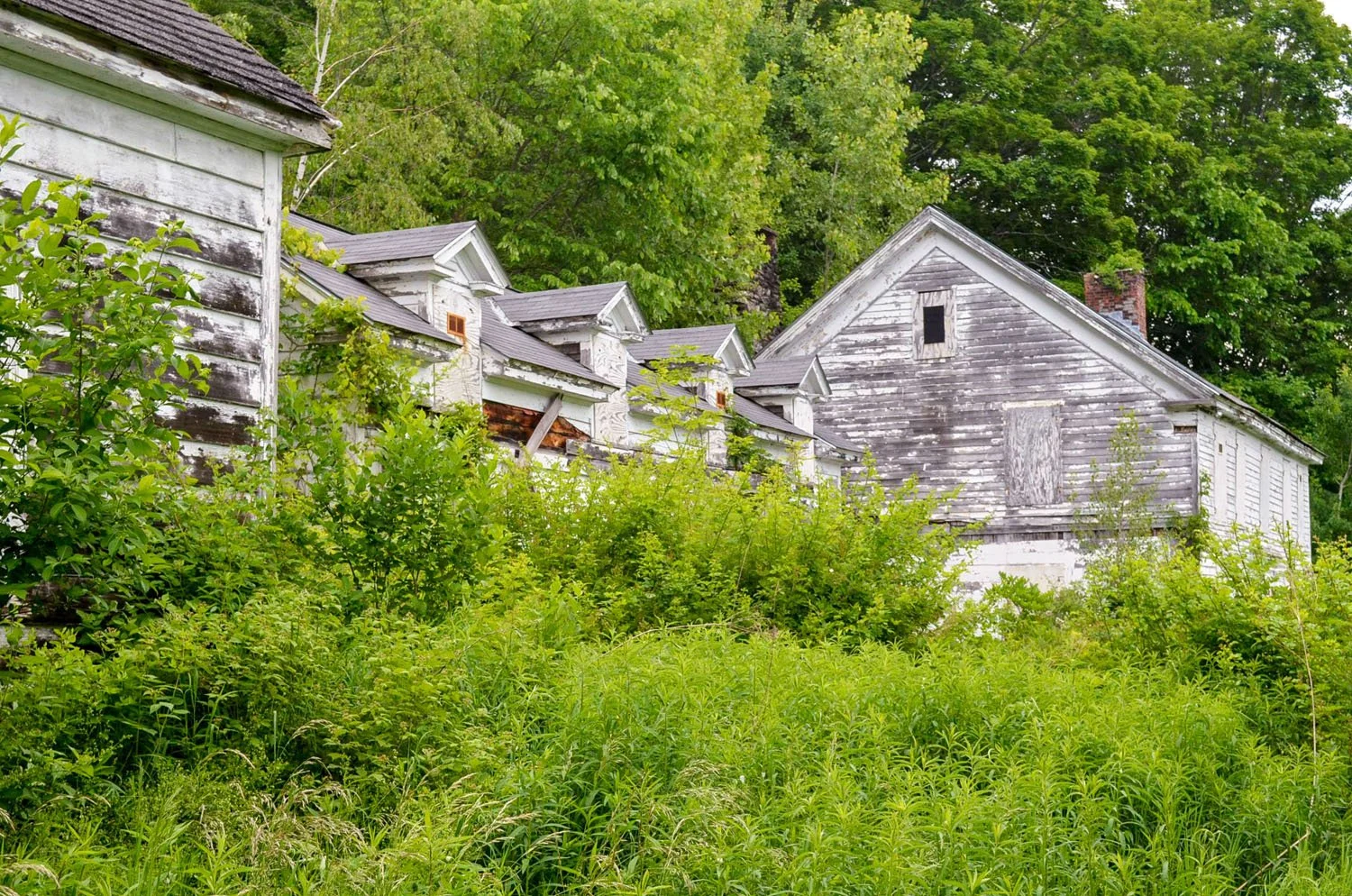Hidden in Plain Sight
Photo courtesy: Mary McGurn
If you travel along Jug End Road from Route 23, just before you get to the Jug End Preserve, you will see a collection of white clapboard structures extending into the site. At first glance, the buildings appear to be a woebegone collection of structures from different periods in our history much abused by neglect, time, and weather. But stop, park your car, and look around. You will begin to see that this was once a substantial homestead with stone retaining walls, fountains, and gardens. This was the John Van Guilder homestead. Perhaps you will be curious. When were they built and by whom? Who were the Van Guilders and how did this homestead evolve and then come to be abandoned? Can it have a new life as a historical marker in our community?
In 1736, the Massachusetts General Court deeded the former Indian reservation lands in Egremont to John Van Guilder or Jan Van Gelder (born Toanuck/Tawanut) in the 1690s. He may have been related to Tataemshatt, sachem of Tachkanick (Taconic). His father was a Wappinger Tribe Chief named Awansous and his mother a member of the Catskill Band of Mohican Indians with extensive Mohican and Wappinger kin networks in the Housatonic River (Massachusetts) and Dutchess County (New York) regions. He was raised by a Dutch family that settled in Guilder Hollow near the site of the present Guilder House, built around 1762 or 1780.
Van Guilder married Anna Maria Karner, a German Palatine immigrant, and had several children, among them, Nicholas, Joseph, John, Matthew, Catharine, Jacob, Andrew, Henry, and Magdalena The family lived in what today is Egremont, Massachusetts. Van Guilder supported them by farming and operating a sawmill in partnership with his brother-in-law, Andreas Karner. He was a Christian and attended services at Stockbridge and the Moravian missions
His name appears on a 1724 Mohican deed for the area of land called Westenhook (Sheffield, Great Barrington, and parts of Stockbridge and Lee). In the summer of 1744, Mohican leaders Konkapot, Skannop, and Poniote of Housatonic gave him land west of the Sheffield line, for “the love & Esteem we have of our friend John Van Guilder."
John and his sons, along with other Mohican people, defended white settlers in Berkshire County from the incursions of New York State patroon Robert Livingston in what has been called the border wars. John was jailed for six months in Albany, New York, for the accidental killing of a sheriff's deputy. He was released in May 1757 and died the next year.
His sons and grandsons later joined American Patriots in the American Revolution.
In 1807, the Van Guilder descendants moved to Vermont and the property was sold to Hezekial and Eliakim Winchell who probably constructed the present house. The estate was then purchased by Uri Bradford who operated the farm until 1922 when the property was sold to Major Hugh and Hester Smiley. Much of what we see today were the results of renovations done in the 1920’s and later turned into the Jug End Resort which operated from 1947 to 1980’s.
This is by no means a full history of the Van Guilder family or their homestead, but a teaser for what more this site can reveal. It is a valuable link to the early days of Egremont and life in the colonies during the beginnings of our nation. As a Historical Commission it is our mission and responsibility to give voice to the walls and gardens of the past to better understand where we came from. Please consider supporting this effort by joining us in the development of a plan to save what is left of this historical treasure and create a lasting landmark for those that follow.
To view a wonderful photo essay created by Mary McGurn showing the buildings and site as they are today, please follow this link:
